Discover the Cistus ladanifer and its properties
1 year ago · Updated 6 months ago
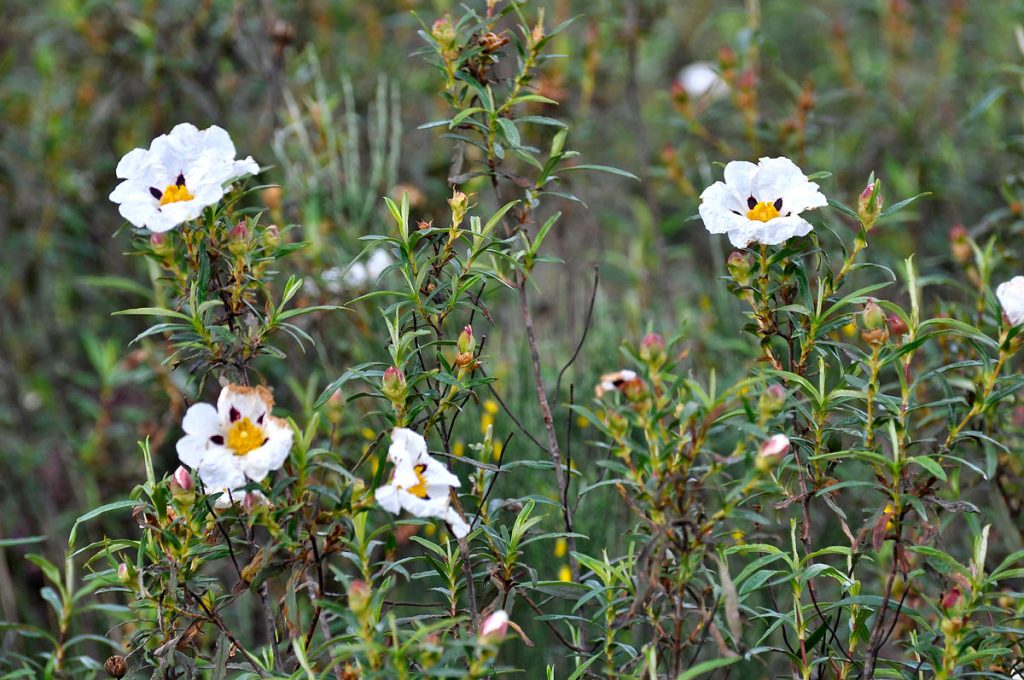
Cistus ladanifer, commonly known as prickly rockrose, is a plant that beautifies the Mediterranean landscape with its flowers and surprises with its multiple properties. Today we are going to dive into the fascinating world of this characteristic species.
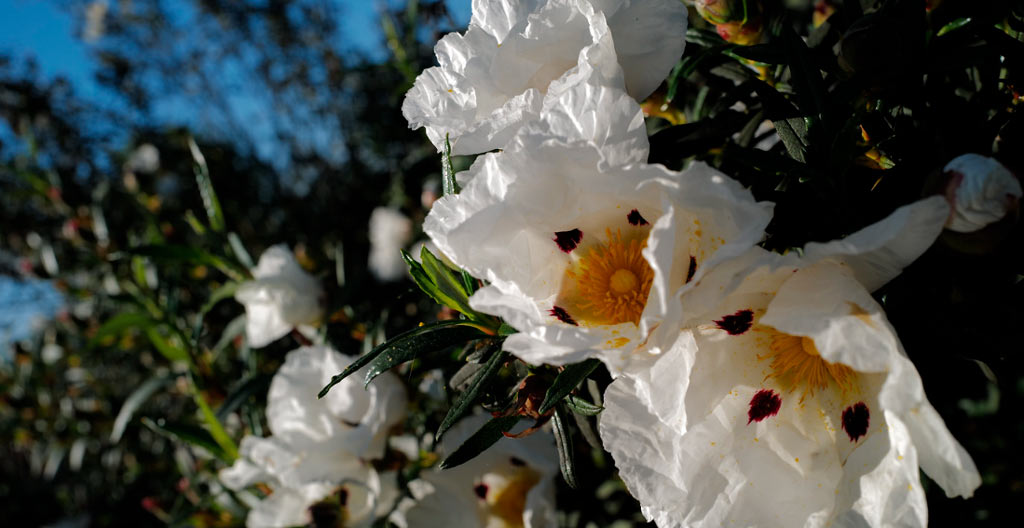
Do you want to buy Boletus mycorrhizal prickly rockroses?
.
- What is the cistus ladanifer?
- Characteristics of the prickly rockrose
- Habitat and distribution of cistus ladanifer
- Relationship between Cistus ladanifer and Boletus
- Medicinal properties of prickly rockrose
- Ornamental and ecological uses
- History and origin of cistus ladanifer
- Related questions about the prickly rockrose and its multiple benefits
What is the cistus ladanifer?
.
The Cistus ladanifer is a shrub belonging to the Cistaceae family. It is an important component of the landscape in the Mediterranean region, especially recognized for its secretion of labdanum, a resin with multiple uses.
This species, also known as jara pringosa, is admired for its beautiful flowering and its ability to adapt to adverse conditions. Its leaves are peculiar for the presence of a viscous substance that gives them a shiny and sticky appearance.
In addition to its aesthetic contribution, Cistus ladanifer plays a key role in traditional medicine, where it is attributed various healing properties, and in the perfume industry, thanks to its characteristic aroma.
Characteristics of the prickly rockrose
.
This plant is distinguished by its lanceolate leaves, covered by a sticky substance that gives it the name "pringosa". The white flower with red spots of the rockrose is large and showy, with delicate petals that contrast with its robust structure.
The fruit of Cistus ladanifer is a capsule that when opened releases numerous small seeds, adapted for wind dispersal. In the life cycle of the prickly rockrose, highlights its resistance to fire, being one of the first to repopulate areas affected by fires.
The properties of cistus ladanifer go beyond the ornamental, involving ecological and biodiversity benefits that we will discuss later.
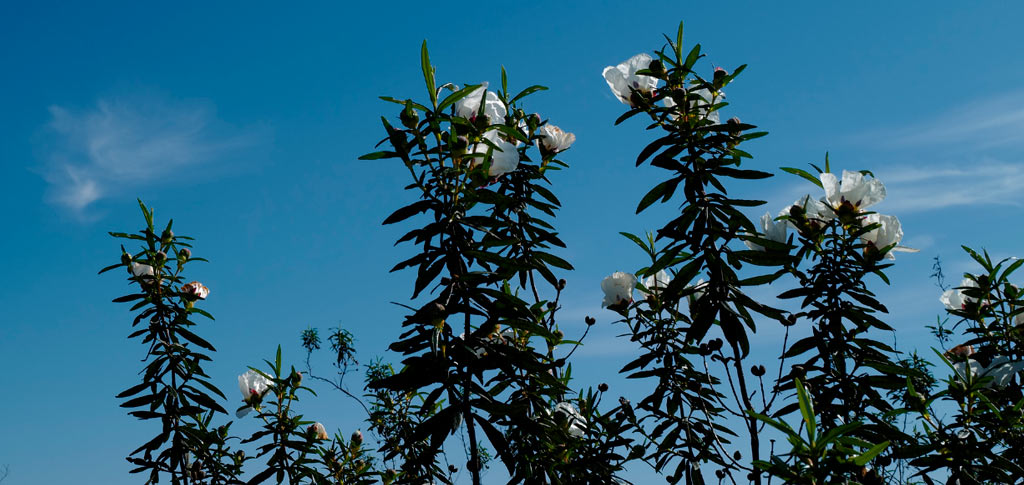
Habitat and distribution of cistus ladanifer
.
The habitat of cistus ladanifer extends throughout the Mediterranean region, showing a preference for acidic and well-drained soils. Its distribution mainly covers the Iberian Peninsula, where Spain and Portugal stand out as its main nuclei.
Although it requires intense sun exposure, rockrose is able to tolerate periods of drought, which allows it to survive in extreme climatic conditions. It is part of plant communities adapted to fire, being frequent in areas prone to forest fires.
The distribution of cistus ladanifer is favored by its ability to quickly take advantage of clear spaces, which allows it to expand and colonize new areas.
Relationship between Cistus ladanifer and Boletus
.
Cistus ladanifer , known as prickly rockrose, has an interesting symbiotic relationship with some mushrooms, especially Boletus. This relationship is based on mycorrhizae, symbiotic associations between plant roots and soil fungi, where both organisms benefit each other: the fungus obtains carbohydrates from the plant and the plant improves water and nutrient absorption.
Mycorrhization of Pringose Rockrose with Boletus
.
Boletus, prized for their gastronomic value, form mycorrhizae with the roots of prickly rockrose, thriving in acidic and poor soils where rockrose is common. This symbiosis not only benefits the ecosystem, but also has significant economic value due to the high demand for Boletus.
Buy Mycorrhizal Pringose Rockrose
.
To foster this symbiotic relationship, it is possible to purchase mycorrhizal pringose rockrose with Boletus. These plants, inoculated with Boletus spores, are available for purchase online, facilitating mushroom production and improving plant growth and resistance.
.
Medicinal properties of prickly rockrose
.
Among the medicinal properties of Cistus ladanifer, it is attributed an antiseptic and healing action. Labdanum resin has traditionally been used to treat skin conditions and respiratory problems.
Recent studies suggest that its extracts could have applications in the fight against certain diseases due to their antioxidant and anti-inflammatory activity. It is important to note that, despite its ancestral use in home remedies, a specialist should be consulted before using any plant for therapeutic purposes.
Scientific interest in the properties of cistus ladanifer continues to grow, and possible uses in the field of modern pharmacology are being investigated.
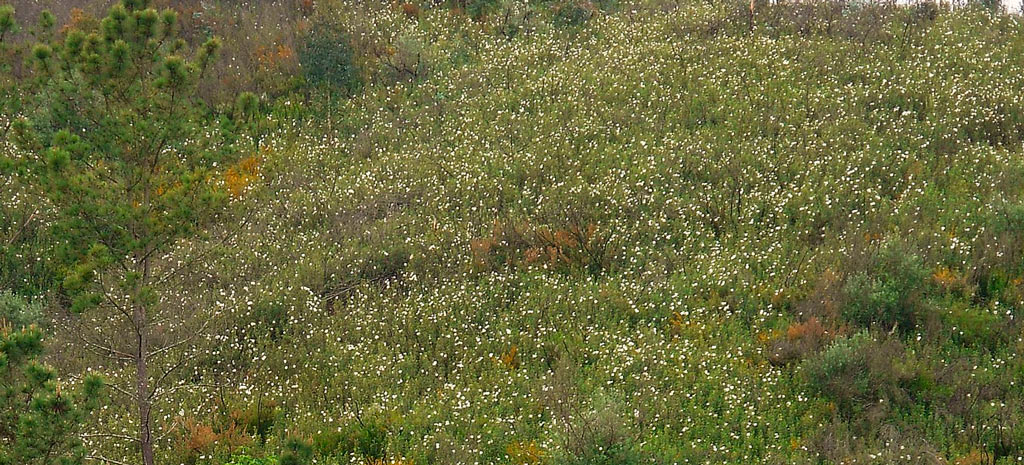
Ornamental and ecological uses
.
- Pringy rockrose is widely appreciated in gardening for its hardiness and spectacular flowering.
- It contributes to the creation of low-maintenance green spaces, ideal for sustainable gardens and xeriscaping.
- In ecological terms, it is a key plant for the restoration of ecosystems after disturbances such as fires.
- It is a key plant for the restoration of ecosystems after disturbances such as fires.
- It attracts a wide variety of pollinators, including bees and butterflies, thus improving local biodiversity.
- Its cultivation can help to reduce soil erosion thanks to its root system that fixes the soil.
History and origin of cistus ladanifer
.
It was first described by the Swedish scientist Linneo in 1753, establishing its botanical classification. The name "ladanifer" refers to the production of labdanum, a distinctive characteristic of the species.
Throughout history, the various civilizations that inhabited the Mediterranean basin knew and valued this plant for both its properties and its beauty. In the mythology and folklore of various cultures, rockroses have had a symbolic role, often associated with protection and renewal.
Traditional knowledge about Cistus ladanifer has passed from generation to generation, enriching the cultural heritage of the communities where this plant is native.
.
What does cistus mean in English
?
The word "cistus" comes from the Greek "kistos", which means "basket" or "box", possibly alluding to the shape of its fruit. In English, it is simply translated as "rockrose". This term is used to refer to plants belonging to the genus Cistus, of which Cistus ladanifer is one of the best known species.
What fruit does the rockrose bear?
.
Prickly rockrose produces a capsule-like fruit which, when ripe, opens releasing a large number of tiny seeds. These seeds are essential for the propagation of the species, especially in disturbed habitats where rockrose plays a crucial role in the colonization and regeneration of space.
What is the name of the rockrose flower?
.
The rockrose flower is characterized by being large and showy, pure white with five petals often spotted with red or purple at the base, giving it a distinctive and decorative appearance. These flowers, in addition to their beauty, emit a fragrance that is attractive to both humans and pollinating insects.
What are the benefits of rockrose?
?
The benefits of rockrose range from ornamental to medicinal. Ornamentally, its flowering brings beauty and color to gardens. Medicinally, it is attributed with antiseptic and healing properties. It is also valued for its contribution to biodiversity and the restoration of ecosystems after a fire.
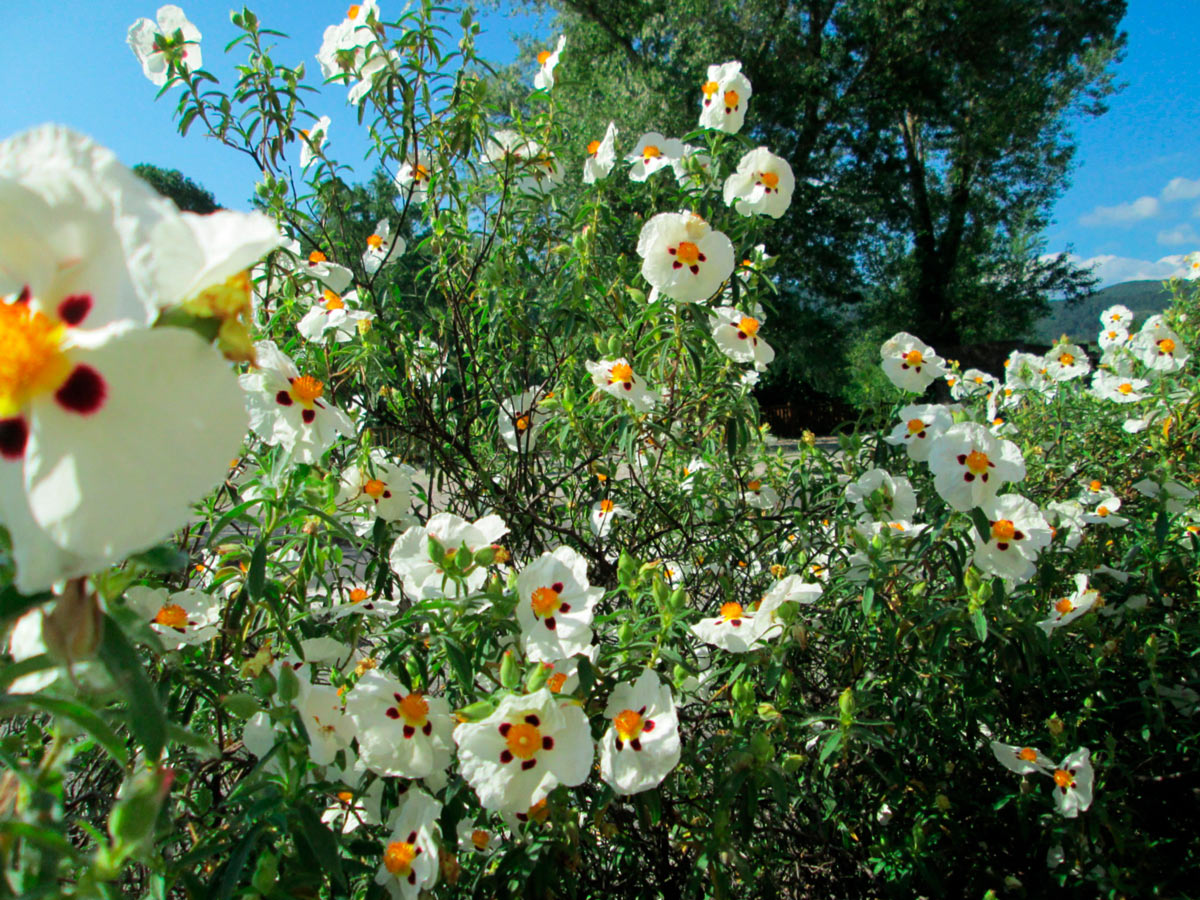
To conclude, knowing and appreciating the richness of Cistus ladanifer allows us to enjoy its ecological, ornamental and medicinal contributions. If you are passionate about nature and you like products related to wild plants and mycology, take a look at La Casa de las Setas.
See you in the bush 😉

Te pueden interesar